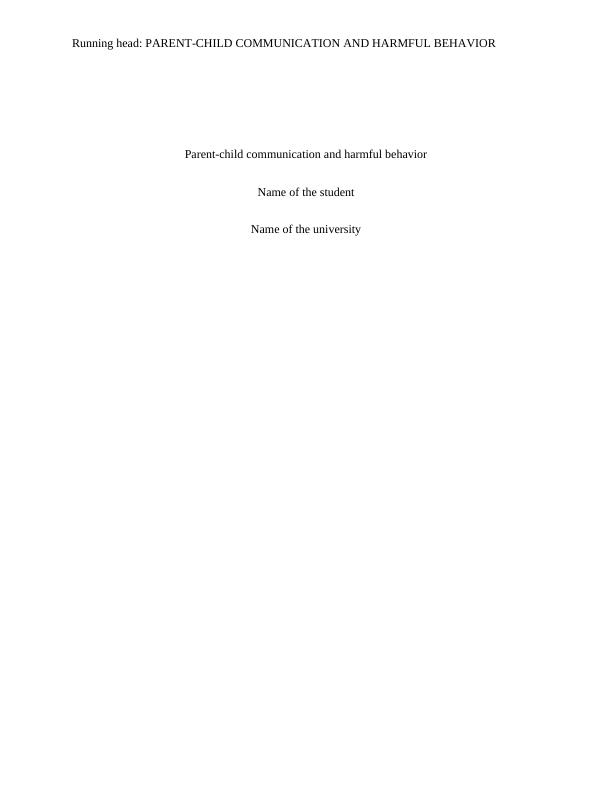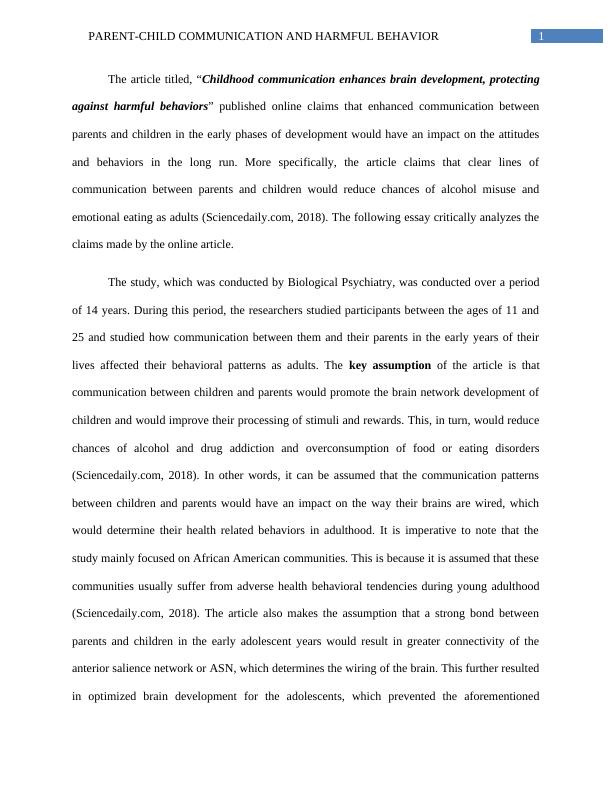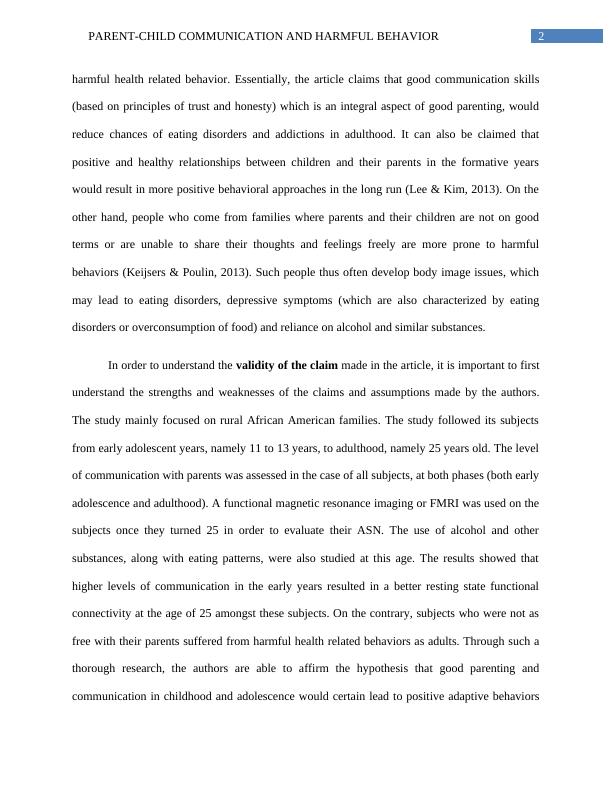Parent-Child Communication and Harmful Behavior
This tutor‐marked assignment (TMA) is worth 25% of the final mark for PSY108 Introduction to Psychology 2. The word limit for this assignment is 1000 words.
7 Pages1501 Words77 Views
Added on 2023-06-03
About This Document
The article claims that clear lines of communication between parents and children would reduce chances of alcohol misuse and emotional eating as adults. The study conducted by Biological Psychiatry was conducted over a period of 14 years. The key assumption of the article is that communication between children and parents would promote the brain network development of children and would improve their processing of stimuli and rewards.
Parent-Child Communication and Harmful Behavior
This tutor‐marked assignment (TMA) is worth 25% of the final mark for PSY108 Introduction to Psychology 2. The word limit for this assignment is 1000 words.
Added on 2023-06-03
ShareRelated Documents
End of preview
Want to access all the pages? Upload your documents or become a member.
Prevention Program for Population & Addiction
|9
|680
|434
Impact of Gaming Addiction in Children or Adults
|5
|1047
|495
The Consumerist Culture
|5
|1073
|317
ADHD as a Risk Factor for Substance Use Disorder
|6
|1506
|155
Factors Affecting Child Development
|10
|2282
|268
HDFS 225 Lifespan Human Development
|5
|2003
|16



